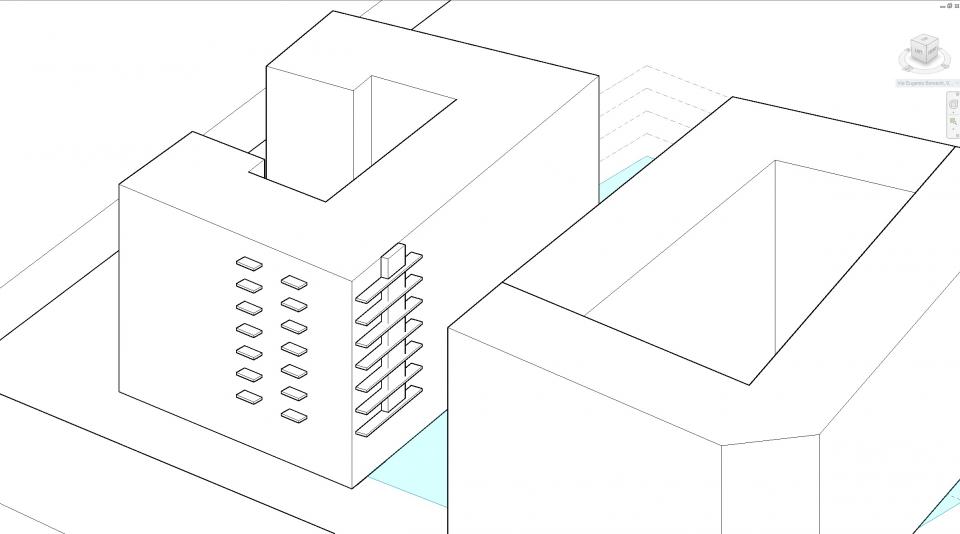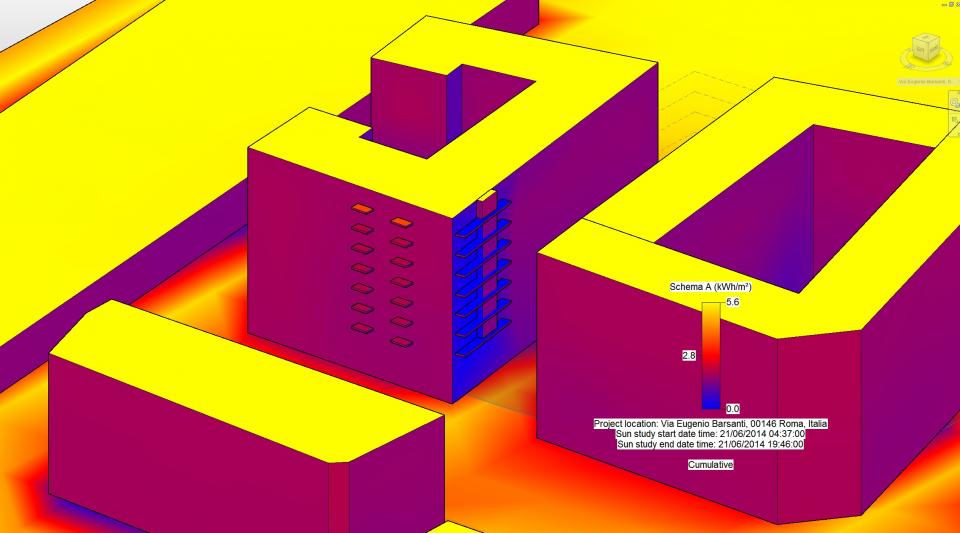Tu sei qui
Es 2_Solar Radiation_Via E. Barsanti Roma
Inviato da Virginia Buccarella il Lun, 24/03/2014 - 23:10
For the second exercise i studied, throught the program Vasari, how solar radiation affects the palace studied in the first delivery.
I have analyzed the solar radiation by considering two major intervals: summer and winter, because they are more effective, both from sunrise to sunset.
To do this I added some details to the model in order to make it more realistic.

In the first image you can note that in winter the maximum radiation is 0.5 kWh/m2. In my building only a small part absorbs all this energy, at the south facade, while everything else is well shaded and therefore absorbs radiation almost nothing, as it is shielded from the building opposite.
In the west facade there is more solar radiation because more exposed, particularly on the balconies, which in turn, shadowing the part below, make that there are the areas in which the absorbed energy is close to zero.

The same thing happens in the summer. The difference are the highest values, that is 5.6 kWh/m2, so the same areas of first image receive more energy. There continue to be differences between shaded areas and those most exposed.
In this image we can see also that the the covers are the elements that absorb more solar radiation, especially in summer, when the sun is very high.

This study points out that there are signs on the facades caused by solar radiation falling on the building.
The most obvious signs are seen in those areas where the sun beats, especially under the balconies, as you can see in the photo,
in which the plaster is darker.
Under the balconies instead you can see how the plaster is yielding, probably also in this case is due to the fact that those
parties do not receive any solar radiation.
CLASS:
CONSEGNA:
